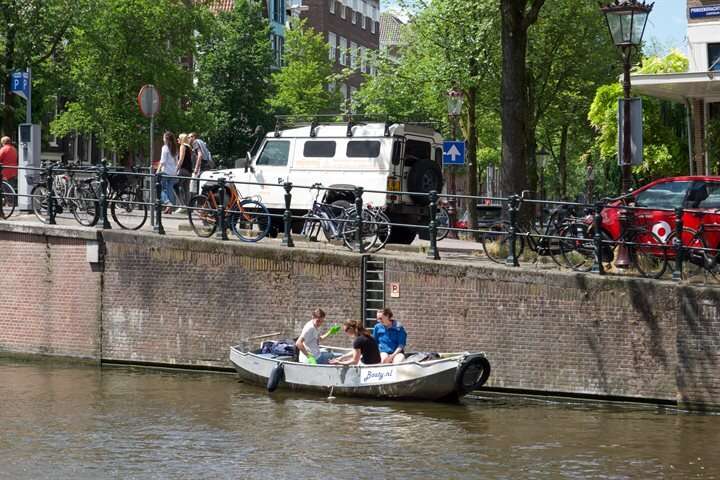Microbes reduce methane coming from Amsterdam's canals

According to researchers from Radboud University and Utrecht University, Amsterdam's canals emit relatively little methane. Methane-eating microbes that make their home on the canal walls probably play an important role. There is also remarkably little contamination of nitrogen, phosphate and organic matter in the canals. The researchers published the results in the Environmental Microbiology journal on 14 December.
Researchers know well that shallow waters such as lakes, rivers and canals are a source of methane. This greenhouse gas is estimated to have 86 times more effect on global warming than CO2. However, little is known about the microbes that cause methane emission and sequestration in urban canals.
Microbiologists from Radboud University and Utrecht University are now studying this, starting with the canals of Amsterdam. They took samples from the canal water, canal bed silt and canal walls at locations along the Bloemgracht canal, Prinsengracht canal, Amstel river, Amstel locks and Artis zoo. Surprisingly, the canals they studied emitted relatively little methane. The reason, the researchers conclude, is that the water and the canal walls are rich in methane-eating microbes.
"We found a new species of bacteria living on the canal walls that consumes methane. This bacterium, which lives in a slime layer on the wall, is probably helping to sequester the methane produced in the canals," explains microbiologist Koen Pelsma (verwijst naar een andere website). "Moreover, relatively little methane is released from the canal bed. The reason for this is that relatively little organic material, such as dead plant matter, is deposited there. Such matter rots on the bed of the canal, and bacteria convert it into methane gas in the process."
"The canals are actually quite clean. There was surprisingly little contamination of nitrogen and phosphate and we measured oxygen levels that were sufficient for fish to live in the water. This is probably because the wastewater treatment plants in the Netherlands are relatively effective."
The fact that methane-eating microbes have been found living in Amsterdam's canal walls opens up interesting possibilities. The microbes live on the section of wall that is under water. "If you could increase the surface area of the section of canal habitat where this bacterium lives, you could potentially use it as a methane filter," says microbiologist Cornelia Welte(verwijst naar een andere website).
The next step for the researchers is to study the canals in other cities. "We already have plans to sample the canals of Delft and Utrecht," says Pelsma. "We expect that the situation in each canal will be different."
More information: Koen A. J. Pelsma et al, Amsterdam urban canals contain novel niches for methane‐cycling microorganisms, Environmental Microbiology (2021). DOI: 10.1111/1462-2920.15864
Journal information: Environmental Microbiology
Provided by Radboud University





















